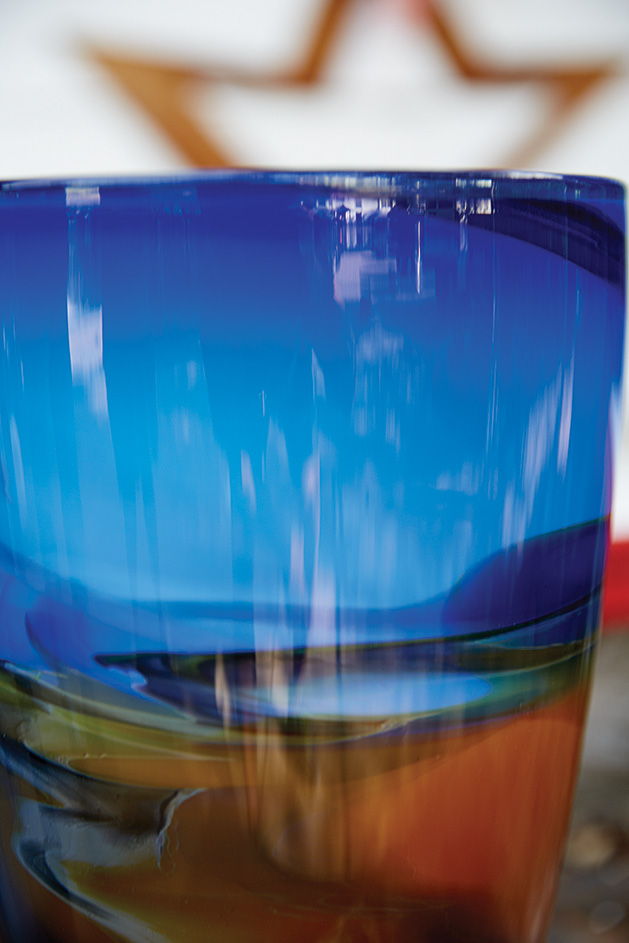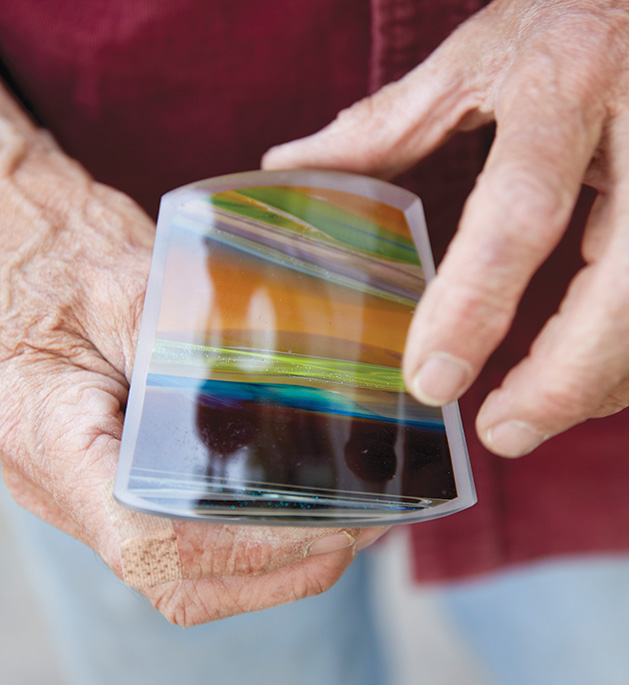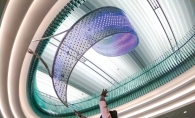
Patrick Casanova is a local artist. Born and raised in the St. Croix Valley, he graduated from Hudson High School and attended the University of Wisconsin (UW)–River Falls. His deep connection to the area is an important part of his story. At every turn, as he developed as an artist—and as a businessman—it was a friend from childhood, or a teacher, who was in the right place to help or guide him toward his next step.
Casanova grew up in a family that was part of the St. Croix Valley arts scene. His parents hosted parties attended by painters, potters and sculptors. Artists and the arts have, for many years, been part of the fabric of Hudson, and Casanova was raised in that tradition. He studied art in school and learned from the community around him.

“There have always been a lot of artists in Hudson,” he says. “I grew up in that world because my parents were friends with so many of the artists working in the area.”
One day when he was on campus at UW River Falls, Casanova ran into a couple of upperclassmen he knew. They were going into the glass studio and invited him to join—that’s when he first learned about the art form that would be the focus of much of his adult life. Shortly after that, Casanova became an art major.

Casanova hoped to teach after finishing graduate school with a Master of Fine Arts in ceramics and a minor in art glass from Southern Illinois University. But there were no jobs available. He found other work but was also able to keep creating studio glass because an old friend was head of the art program at UW River Falls and let him have some studio time on nights and weekends.
In 1994 Casanova built a home studio, and by 1997 he was in the art glass business full time. That year he opened a studio in downtown Hudson. His work was in galleries around the Midwest—and across the country—and he was traveling to commercial markets where retailers would place orders with him. The downtown Hudson studio closed after more than a decade, as a changing real estate climate made it less viable. His work is still available in downtown Hudson at Seasons on St. Croix.
Since 2011, Casanova Glass has been located in a studio in Casanova’s Hudson area home. Most of his work now centers on lamps and pendant lights. “For me, no other material handles light and color as does glass. Designing lighting for the home was a natural outgrowth of that fascination,” he says.

Casanova runs an open studio. Call ahead to find out what his work schedule is as he welcomes visitors and offers small group and individual sessions that allow the curious to create their own work of art glass. Casanova has helped couples make special pieces for their weddings, such as unity candles and vases, and has groups of friends who come back year after year to spend time with one another and create a keepsake of the occasion. And, each year starting just after Halloween, Casanova helps families create their own Christmas ornaments.
“I have families that have been coming back for years,” he says. “I have one family of about 19 people who come every year to make ornaments and have a family Christmas party.”
Family and friends have, in many ways, been the bedrock of Casanova’s career, so it’s not surprising he would enjoy being part of creating family traditions for other people, too.

How Does He Do That?
The art and science of glass blowing.
- All the glasses Casanova uses must be formulated to behave a certain way. They need to respond to temperature reliably so they get soft and then stiffen gradually as they cool.
- When the glass is created by the manufacturer, it is the color Casanova will work with. There are only three commercial color manufacturers for blowing colors, two are in Germany and one is in New Zealand.
- Casanova’s furnace holds 200 pounds of liquid clear glass kept at 2100 degrees 24/7. The clear glass and the colored glass must be formulated to expand and cool at exactly the same rate or cracks will develop where the meet.
- Molten glass is worked into an oblong about the size of a goose egg.
- No matter how large the work is going to be, it is designed when the glass is goose egg-sized.
- The goose egg is repeatedly reheated to 2,100 degrees and then gradually blown out to the size and shape of the final work.
- As the glass begins to cool he puts it back into the furnace to reheat and then takes it out and works it some more.
- The work requires quickness and confidence and to be present when working on a piece.
- Casanova says. “You reach a point where you are less aware of the technique, but always present with what is happening.” Like playing an instrument—you no longer need to think about each movement.









